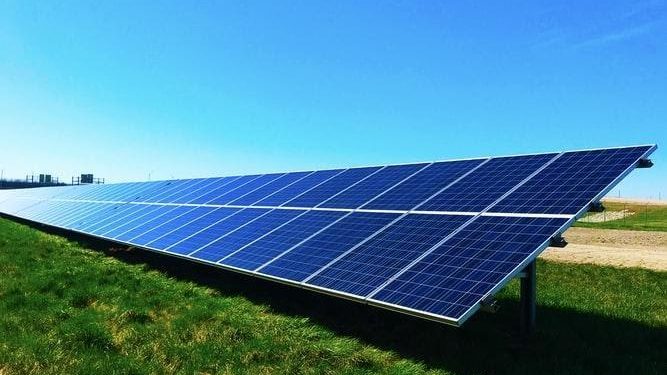AI in renewable energy is set to bring transformative change and create new viable solutions to alleviate a number of challenges that are impeding sustainable energy operations.
Most of us know that AI has potential applications for various industries, but not many are aware that AI holds the key to addressing some of the renewable energy’s most pressing challenges.
AI and Renewable Energy Symbiosis
Leading energy management consultants will tell you how AI can transform the renewable energy sector and solve its major challenges.
The demand for energy is increasing across the globe. Fossil fuels’ finite supply, unsustainable nature, and heavy impact on carbon emissions pose an increasingly apparent problem for the world of tomorrow.
Energy research and development in renewable energy are crucial for identifying new and improved technologies that have implications on cost reduction, commercial-scale provisions, and of course, carbon emissions.
Machine learning and artificial intelligence are revealing new avenues and viable solutions for distributed energy resource systems and storage technologies. The benefit of these technologies is that they can analyze large historic data sets and real-time data to produce more accurate forecasting, optimize grid operations as demand fluctuates, and inform infrastructure plans and decisions.
One major challenge that greatly limits the usefulness and efficiency of renewable energy is weather unpredictability and infrastructure maintenance.
Solar and wind – the major sources of renewable energy – both face specific challenges such as better forecasts for spare parts, alleviating unplanned maintenance, and reducing downtime.
Another issue is that energy storage and the connectivity between energy networks to maximize efficiency and ensure sustainable supply.
Electricity grids are extensive and very complex networks and tend to rely heavily on sophisticated management systems. With an array of locally owned and operated grids operating in isolation, there is a multitude of disparate data points and information sources. If they are aligned in a smart manner, through the help of artificial intelligence and machine learning algorithms, grid management can essentially better cope with the diversity of electricity sources and facilitate a better distribution of power.
Smart Control Centers
The sporadic nature of renewable energy is a key challenge. However, the drawbacks can be mitigated with better weather prediction and knowledge of consumption patterns.
Smart sensors and devices are now capable of being connected to the grid to transmit a large volume of data that will yield many useful insights. AI technology and machine learning can analyze this vast amount of information for better operations. With the inclusion of AI and smart sensors, utility companies will have the flexibility and capability that they need to keep up with fluctuating demand. This is very important when demand increases unexpectedly and distribution system operators must ensure voltage or supply stays within operational parameters.
Heavy equipment that consumes a lot of electricity like large HVAC units and industrial furnaces can leverage advanced systems for controlling load that will intelligently switch off when the electric power supply is running low. Similarly, storage units can also be controlled on the basis of the demand/supply equation.
Smart sensors and intelligent devices can play a crucial role in analyzing variables that permit the prediction of weather conditions. This will help to enhance the efficiency and performance of renewable energy sources.
By accurately predicting weather conditions, AI systems can forecast how much renewable energy can be generated and how this can support and integrate with other energy sources, such as those from fossil fuels for example.
Better Integration
Another key challenge that renewable energy faces is that since generation units are highly distributed and often spread over a vast area, balancing the input from so many units requires a better system.
Distributed energy grids and microgrids are playing an increasingly important role in electricity supply. Hence, there is a need to integrate them seamlessly with the electricity grid. When numerous microgrids are connected to the main grid, balancing the electricity supply can become challenging.
AI control systems have a crucial role to play in resolving imbalances, without the need for human intervention and with the help of machine learning and advanced simulation, in an autonomous way.
Intelligent systems can take into account the varied loads from solar PV resources, electric vehicles, and storage, and analyze the tremendous influx of data from smart sensors to autonomously decide how to allocate energy for local requirements and exchange energy with the main grid simultaneously.
Better Safety and Reliability
Besides improving the predictability of renewable energy supply, AI can also help to enhance reliability, efficiency, and safety.
A major challenge of renewable energy is monitoring the status of expensive equipment to minimize maintenance and operational costs. AI can keep tabs on energy waste and leakage issues, the status of devices and energy consumption patterns in order to provide predictive maintenance measures
For instance, AI-driven analysis can warn you in advance about wear and tear taking place in wind turbines by processing data coming from smart sensors installed in these units. When the health of the unit is headed towards critical status, the AI system can inform operators about it so that they can perform preventive maintenance as needed. Considering the wider energy landscape, companies are now in a position to factor in AI for their network maintenance strategies.
Facing a commercial challenge or trying to navigate a specific area of expertise? Pangea Strategic Intelligence’s network of AI and renewable energy experts have brought about the significant commercial value to various companies operating or interested in Energy, Natural Resources, and Infrastructure.





